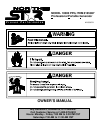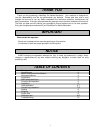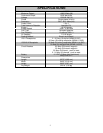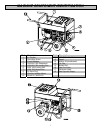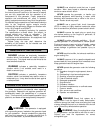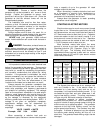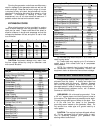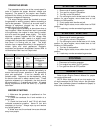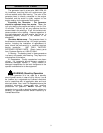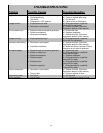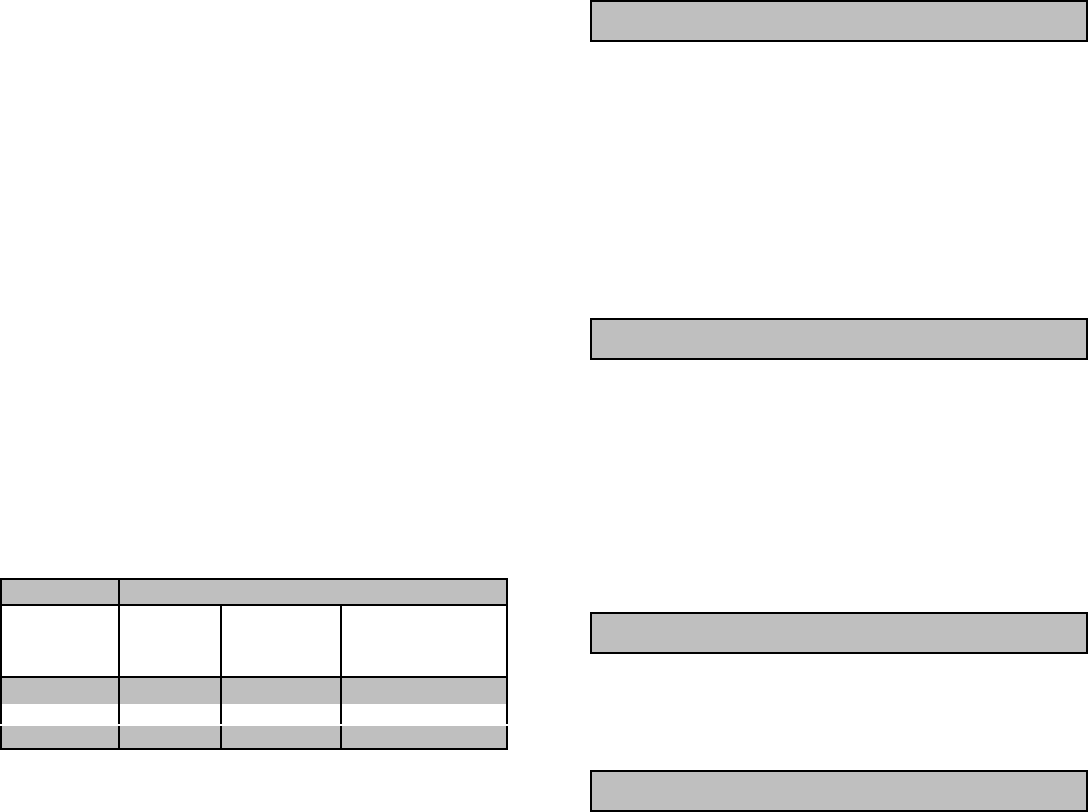
8
OPERATING SPEED
The generator must be run at the correct speed in
order to produce the proper electrical voltage and
frequency. The speed of the engine was carefully
adjusted at the factory so that the generator produces
the proper voltage and frequency.
The output voltage should be checked to ensure
the generator is working properly before connecting a
load to the generator. Failure to do so could result in
damage to equipment plugged into the unit and
possible injury to the individual.
All engines have a tendency to slow down when a
load is applied. When the electrical load is connected
to the generator, the engine is more heavily loaded,
and as a result the speed drops slightly. This slight
decrease in speed, together with the voltage drop
within the generator itself, results in a slightly lower
voltage when the generator is loaded to its full capacity
than when it is running with no load. The slight
variation has no appreciable effect in the operation of
motors, lights and most appliances. Electronic
equipment and clocks will be affected if correct RPM is
not maintained. See Load vs. Output chart.
Load Output
Percent of
Generator
Output
Speed
(RPM)
Frequency
(Hz)
Generator
Voltage at 120V
Receptacle
0 % 3750 62.5 129V
50 % 3600 60.0 120V
100 % 3540 59.0 112V
Output voltage should be checked periodically to
ensure continued proper operation of the generating
plant and appliances. It can be checked with a
portable meter. Frequency can be checked by using
an electric clock with a sweep second hand. Timed
against a wristwatch or a stopwatch, the clock should
be correct within +/- 2 seconds per minute. All speed
setting adjustments should be done by a qualified
technician.
BEFORE STARTING
1. Make sure the generator is positioned on firm
l evel surface.
2. Check the crankcase for oil and maintain at a
proper level.
3. Check fuel level and fill tank 7/8 full with fresh
unleaded automotive gasoline. Never fill fuel tank
completely to the top. Always wipe up and remove
any spilled gasoline.
4. Make sure that the exhaust fumes are directed
away from people.
STARTING - MANUAL
1. Disconnect all loads to generator.
2. Turn gas line valve to ON position.
3. Turn key to the ON position.
4. For cold engine, move choke lever to full choke
position, for warm engine, move choke lever to half
choke or to RUN position.
5. Firmly grasp recoil handle and pull.
6. When engine starts, move choke lever to RUN
position.
7. Loads may now be connected to generator.
STARTING - ELECTRIC
1. Disconnect all loads to generator.
2. Turn gas line valve to ON position.
3. For cold engine, move choke lever to full choke
position, for warm engine, move choke lever to half
choke or to RUN position.
4. Turn key to start position.
5. When engine starts, move choke lever to RUN
position.
6. Loads may now be connected to generator.
STOPPING
1. Disconnect all loads to generator.
2. Turn engine key switch to OFF position.
3. Turn gas line valve to OFF position.
ENGINE CARE
Refer to your Engine Owner’s Manual for proper
care and maintenance.
NOTE: When changing the oil on a hot engine, the
oil might overshoot the oil drain hole on the generator
base. Use a deflector (piece of cardboard or paper) to
direct the oil down the hole.



